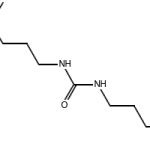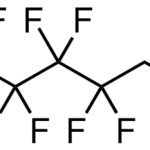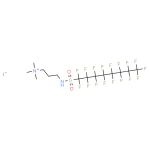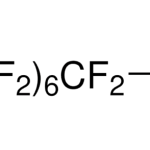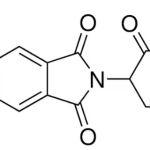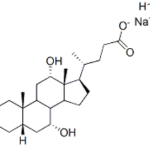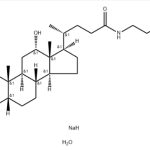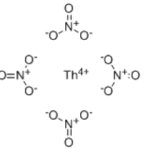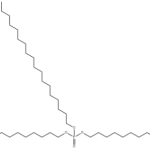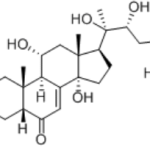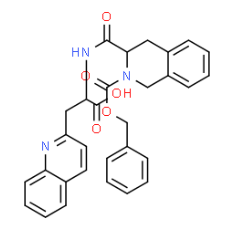
Identification
CAS Number
72561-05-8
Name
Recombinant Lysyl Edopeptidase
Synonyms
2-Quinolinepropanoic acid, α-[[[1,2,3,4-tetrahydro-2-[(phenylmethoxy)carbonyl]-3-isoquinolinyl]carbonyl]amino]- [ACD/Index Name]
N-({2-[(Benzyloxy)carbonyl]-1,2,3,4-tetrahydro-3-isochinolinyl}carbonyl)-3-(2-chinolinyl)alanin [German] [ACD/IUPAC Name]
N-({2-[(Benzyloxy)carbonyl]-1,2,3,4-tétrahydro-3-isoquinoléinyl}carbonyl)-3-(2-quinoléinyl)alanine [French] [ACD/IUPAC Name]
N-({2-[(Benzyloxy)carbonyl]-1,2,3,4-tetrahydro-3-isoquinolinyl}carbonyl)-3-(2-quinolinyl)alanine [ACD/IUPAC Name]
(2R)-2-[[(3S)-2-phenylmethoxycarbonyl-3,4-dihydro-1H-isoquinoline-3-carbonyl]amino]-3-quinolin-2-ylpropanoic acid
SMILES
c1ccc(cc1)COC(=O)N2Cc3ccccc3CC2C(=O)NC(Cc4ccc5ccccc5n4)C(=O)O
StdInChI
InChI=1S/C30H27N3O5/c34-28(32-26(29(35)36)17-24-15-14-21-10-6-7-13-25(21)31-24)27-16-22-11-4-5-12-23(22)18-33(27)30(37)38-19-20-8-2-1-3-9-20/h1-15,26-27H,16-19H2,(H,32,34)(H,35,36)
StdInChIKey
RNPCKGMURRKZFD-UHFFFAOYSA-N
Molecular Formula
C30H27N3O5
Molecular Weight
509.552
Properties
Appearance
White or off-white powder
Safety Data
Personal Protective Equipment
dust mask type N95 (US), Eyeshields, Gloves
RIDADR
NONH for all modes of transport
WGK Germany
3
Specifications and Other Information of Our Recombinant Lysyl Edopeptidase CAS 72561-05-8
Description
Lysyl endonuclease, also known as lysyl endopeptidase, Lys-C endonuclease, is a serine protease originally discovered and isolated from soil bacteria by Masaki et al.The enzyme is highly specific and specifically cleaves peptide bonds at the carboxy terminus of lysine residues and S- aminoethylcysteine residues.It has also been reported to have a small amount of non- specific cleavage.This enzyme is a very valuable tool enzyme for protein sequence analysis and bioproduct production.The enzyme can be used alone or in combination with other proteases, and the digested protein can be used for peptide mapping and preparation of the protein of interest.
Advantage
- No animal origin : no animal diseases, no pathogenic substances, no contamination by exogenous factors, and high safety.
- Quality stability : This product is a lyophilized powder containing a biologically active protective agent. It has been mass-produced, and the difference between batches is small ; the production scale is more than 1000L.
Properties
| Recombinant Lysyl Endopeptidase | Mass Spec Grade | Biochemical Grade |
| Source | Escherichia coli | Escherichia coli |
| MW | 36kD±3.6kD | 36kD±3.6kD |
| Purity | Single main band (SDS- PAGE) with a molecular weight of 27.7 kD ± 2.8 kD (SDS-PAGE) | Single main band (SDS- PAGE) with a molecular weight of 27.7 kD ± 2.8 kD |
| Specific activity | ≥3.0AU/mg pro. | / |
| Protein content | 30%-70% (Check COA) | 30%-70% (Check COA) |
| Residue DNA | ≤100ng/mg pro. | ≤100ng/mg pro. |
| Residue HCP | ≤100ng/mg pro. | ≤100ng/mg pro.v |
| Optimum pH | 8.5~9.5 | 8.5~9.5 |
| Solubility | Soluble in buffer | Soluble in buffer |
| Product Usage | Protein analysis. | 1.Production of biological products, such as insulin and analog production, production of GLP-1 analogues. 2.Protein structure and function studies, such as protein mass spectrometry, sequencing, peptide mapping analysis. 3.Production of small molecular proteins or peptides, such as cosmetic peptides, antimicrobial peptides, food flavor peptides, and the like. Enzymatic synthesis of Lys-X compounds. 5.The cultivation of stem cells and primary cells. |
Enzyme activity definition
At 30 ° C, pH 9.5, the amount of enzyme that produces 1 μmol of p-nitroaniline per minute for the catalytic substrate is 1 AU.
Recommended Method
1.Protein preparation. The protein was dissolved in a solution of 25 mM Tris-HCl, pH 9.2.Proteins with low solubility or denaturation treatment can be solubilized by incubation with a minimum volume of denaturing agent such as 8 M urea or 6 M guanidine hydrochloride at 25 ° C to 37 ° C for 1 h.Proteins that require disulfide reduction treatment can be added to DTT or β-mercaptoethanol at a final concentration of 5 mM and incubated at 50-60 ° C for 20 minutes to dissolve. The volume of the reaction solution was adjusted so that Tris-HCl was 25 mM, urea was 1 M or less, and guanidine hydrochloride was 0.1 M or less.
2.Enzyme preparation. The desired enzyme powder was weighed and dissolved in 25 mM Tris-HCl (pH 9.2) to give an enzyme solution concentration of 1-10 mg/ml.
3.Digestive response. The amount of 1 g of polypeptide or protein recommended enzyme is between 1 and 100 AU.It is recommended to react at 25 ° C ~ 37 ° C for 2 ~ 18h. If it is necessary to terminate the reaction, acetic acid or hydrochloric acid may be added to adjust the pH to acidity.
Transport and Storage Stability
Transport stability : It is transported in an ice pack to keep it active.
Storage stability : Store at -15~-20°C, stable within 24 months ; Store in -15 with a solution of enzyme concentration greater than 1mg/ml in Tris-HCl buffer pH 8.0 to pH 11.0 ~-20 ° C, repeated freeze-thaw 10 times, no loss of activity.It is recommended not to exceed 7 days after storage at 2~8°C, and no more than 30 days for -15~-20°C.
Links
This product is developed by our R&D company Apnoke Scientific Ltd (http://www.apnoke.com/).
Quick Inquiry
Fill out our inquiry form and one of our experts will be in touch with you shortly.

